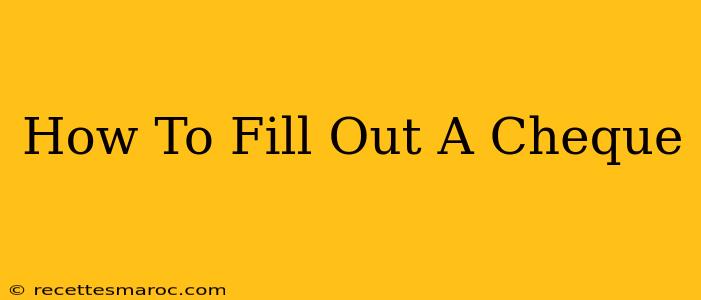Writing a check might seem old-fashioned in our digital age, but knowing how to do it correctly is still a valuable skill. Whether you're paying bills, making a purchase, or sending money to someone, understanding the process ensures your transaction goes smoothly. This comprehensive guide will walk you through each step, ensuring you fill out a check accurately and confidently.
Understanding the Anatomy of a Check
Before we dive into filling out a check, let's familiarize ourselves with its key components:
- Your Name and Address (Drawer): Located at the top left, this section shows who's writing the check.
- Check Number: Located in the upper right-hand corner, this unique number helps track your transactions.
- Date: Located to the right of your name and address, write the current date.
- Pay to the Order Of: This crucial section is where you write the recipient's name or business name. Be precise and legible to avoid errors.
- Amount in Numeric Form: Write the monetary amount in numbers next to the dollar sign ($) in this section.
- Amount in Words: Write out the monetary amount in words on the next line. This step is crucial for fraud prevention. Ensure the written amount matches the numerical amount.
- Memo: This optional section allows you to add a description or note about the payment.
- Your Signature: Sign your check in the bottom right corner. This verifies the transaction.
Step-by-Step Guide to Filling Out a Check
Let's break down the process step-by-step:
1. Date the Check
Start by writing the current date in the designated space. Use MM/DD/YYYY format (e.g., 03/15/2024) for clarity.
2. Write the Payee's Name
Carefully write the name of the person or business receiving the payment in the "Pay to the Order Of" line. Be precise, especially with spelling and avoid abbreviations that could cause confusion.
3. Enter the Numerical Amount
Write the amount of the check in numbers next to the dollar sign ($). Align the number to the left side for clarity and to prevent fraud. For example, $125.50.
4. Write Out the Amount in Words
Write the same amount in words on the following line. Start by writing the dollar amount, then write “and” followed by the cents as fractions of a dollar. This is crucial for security and helps prevent alterations. For example, “One Hundred Twenty-Five and 50/100 Dollars.” Any discrepancies between the numerical and written amounts can invalidate the check.
5. Add a Memo (Optional)
If desired, use the "Memo" line to add a brief description of the payment. This helps you track your expenses later.
6. Sign the Check
Sign your check in the signature line. Use your usual signature to avoid any issues with verification. A consistent signature is crucial for check legitimacy.
7. Double Check Everything!
Before detaching the check, carefully review all the information you've written. Ensure there are no errors in the date, payee's name, amount (both numeric and written), and your signature.
Avoiding Common Mistakes
- Avoid using abbreviations: Write out the full name of the recipient.
- Ensure numerical and written amounts match perfectly: Any discrepancy can invalidate the check.
- Never leave blank spaces: Fill all spaces completely to prevent potential alterations.
- Use a pen, not pencil: Pencil markings can be easily altered.
- Keep your checks secure: Protect your checkbook from theft or loss.
By following these steps, you'll be able to confidently fill out a check every time. Remember, accuracy and attention to detail are key to preventing errors and ensuring your financial transactions are processed smoothly. While checks are becoming less common, understanding how to write one remains a useful skill.

